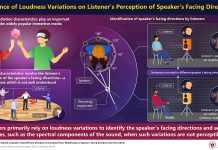
Researchers at the University of Wyoming have made a significant breakthrough that could transform the future of computing.
Led by Jifa Tian, an assistant professor in the Department of Physics and Astronomy and interim director of UW’s Center for Quantum Information Science and Engineering, the team has developed a new method for controlling magnetic states in ultrathin, two-dimensional materials.
This discovery, detailed in their paper published in Nature Communications, promises to enhance computer memory and could lead to the creation of new types of computers that are both faster and more efficient.
The focus of their research is on van der Waals magnets, which are materials composed of layers just a few atoms thick, held together by van der Waals forces.
These materials, like graphite, can be separated into atomic layers using simple methods such as using Scotch tape.
The team specifically worked with a material called chromium triiodide, a two-dimensional magnet, sandwiched between two layers of graphene.
By applying a small electric current, known as a tunneling current, through this layered structure, the researchers found they could control the orientation of the magnetic domains within the chromium triiodide.
These domains are tiny, about 100 nanometers in size, and the direction they point can be switched by this current. This process is similar to flipping a light switch to turn a bulb on or off.
What makes this research particularly groundbreaking is its energy efficiency.
The method uses significantly less energy than traditional magnetic control methods—about a thousand times less, comparable to replacing an old lightbulb with an energy-saving LED.
This efficiency marks a major step forward in developing greener, more sustainable technology.
Additionally, this technology introduces what Tian calls a “probabilistic bit.” Unlike traditional computers, which store information as binary bits (either 0 or 1), these probabilistic bits can switch between 0 and 1 based on controlled probabilities.
This feature makes them similar to neurons in the human brain, which connect and transmit information through electrical signals.
The potential applications of this technology are vast.
These new types of magnetic devices could lead to the development of probabilistic computers, which are particularly adept at handling complex machine learning tasks and processing large data sets—areas where traditional and even quantum computers struggle.
These computers would not only be faster and more powerful but also smaller, simpler in design, and less prone to errors.
Tian’s team believes that their research will pave the way for new, powerful computing platforms that could change the way we approach technology, making it faster, more efficient, and capable of handling increasingly complex tasks without the extensive power and space requirements of current systems.
Source: University of Wyoming.



